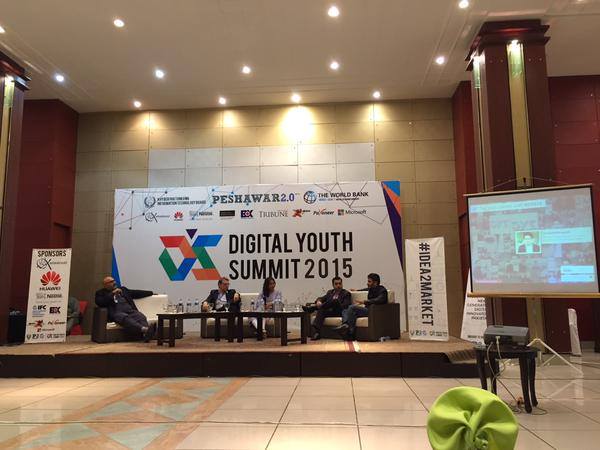This year’s Digital Youth Summit was bigger and better, approximately 3500 participants attended the Digital Youth Summit (conference and expo). Around 100 speakers, of which 15 were international, spoke at the conference. During the event, more than 20 thousands tweets were posted on twitter, leading the official hashtag of the conference – #DYS15 – to trend in Pakistan and Dubai.
After an amazing Digital Youth Summit, the dust is slowly settling down, the 100 or so speakers and 3500 participants (at the conference and expo) have returned to their hometowns, offices, classrooms, startups and innovation labs. After a very hectic and long weekend at DYS, everybody might have relaxed by now. I thought, now is the right time to look back at some of the most important panels from the conference.
The primary focus of the panel on funding was to help aspiring entrepreneurs by answering some of the most important questions with regards to fundraising. For example, which source of funding is better (bootstrapping, crowdfunding, angel investment etc.)? How much to raise? Where to start? How much funding is enough? And some other important lessons.
This was a five star panel, with the head of LUMS Centre for Entrepreneurship, Khurram Zafar, moderating the session (who himself has a rich background in investment and funding). He was joined by Kalsoom Lakhani, head of Invest2Innovate, an Islamabad based accelerator, Kash Rehman, a US-Based Pakistani, running Foodem.com, Haseeb Awan, a US-based Pakistani who is the founder of BitAccess and Y-Combinator alum, and Marco Villa, MD Italian Angels, an Italy based angel network.
Read also: Digital Youth Summit 2015: Panel Discussion Revealed horrifying facts about Cyber Crime Bill
Here are some of the more important lessons from the panel that every aspiring entrepreneur should read:
1. Crowd-funding is only good for smaller amounts of funds. This is why, success on crowd funding platform is hugely dependent on strong story-telling skills. So a campaign on Indigogo or Kickstarter needs months of preparations to be successful.
2. How much funds should you raise? calculate the amount of money you need for one month of running costs, multiply that by 12 ( or 18 months, depending on your needs), and then, just to be safe, include a cushion amount for some extra costs that you can incur during this period.
3. Instead of tightly holding on to equity of your startup, which has yet to make its mark, it’s always better to give away a share of your equity to someone who is ready to invest in your startup. This way, you will be left with a smaller portion but of a pie bigger and much more valuable than the original one.
4. Don’t go and raise unlimited amount of funds. Have a number, and strive for raising just a little above that amount..
5. 3Fs (family, friends and fools) are the three most convenient sources of funding. If these three do not trust you for funding, how can you expect somebody else to do the same?
6. In Pakistan right now, since most of the startups are at an earlier stage, they seek valuable advice and not funding
7. One of the cofounders has to put on the business development and fundraising hat, instead of hiring (or outsourcing it to) someone else. Because you know the story behind your startup and the reason why you have started, so you could better sell your story. This way you will be in a better position to articulate an amazing pitch and sell your story to the investors.
The author is a Co-Founder and Campus Lead at Peshawar 2.0. He tweets as @SalmanAhmad











